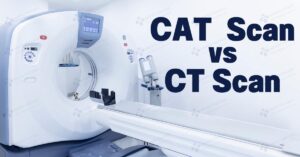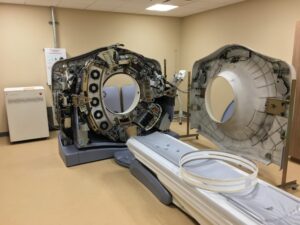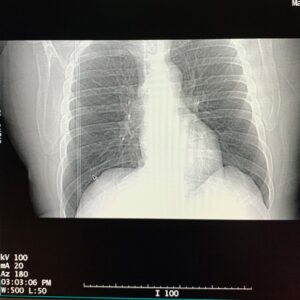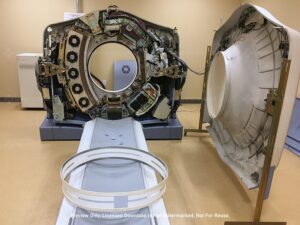When undergoing a CT scan, there is often more questions than answers available. MRIPETCTSOURCE is here to provide you with solution to your imaging needs. In this Blog Series, we will answer questions commonly asked by patients prior to a CT scan.
How Does a CT Scan Work?
How Long Before I Receive My CT Scan Results?
Patients can access CT scan results within 24 to 72 hours of the examination. CT scan images are reconstructed within minutes of concluding the exam. CT technologists can view the images, but only a Radiologist is authorized to interpret them for the purpose of diagnosing any medical conditions. Upon completion of the CT exam, the images are transmitted to a remote viewer. Radiologists analyze the images and convey the diagnosis to the referring MD.
What Does CT mean?
“CT” stands for Computed Tomography, a medical imaging technique that combines X-ray technology with computer processing to generate detailed cross-sectional images of the body. This advanced diagnostic tool provides comprehensive insights into internal structures, allowing healthcare professionals to assess and diagnose various medical conditions with precision. Click here to learn more about CT scans on our Computed Tomography resources page.
How Much Radiation is in a CT scan?
The effective dose for radiation exposure is measured in milliSeiver, mSv. According to recent study by Stanford Medical, the average U.S. citizen receives about 3.6 mSv per year in ambient environmental radiation exposure.
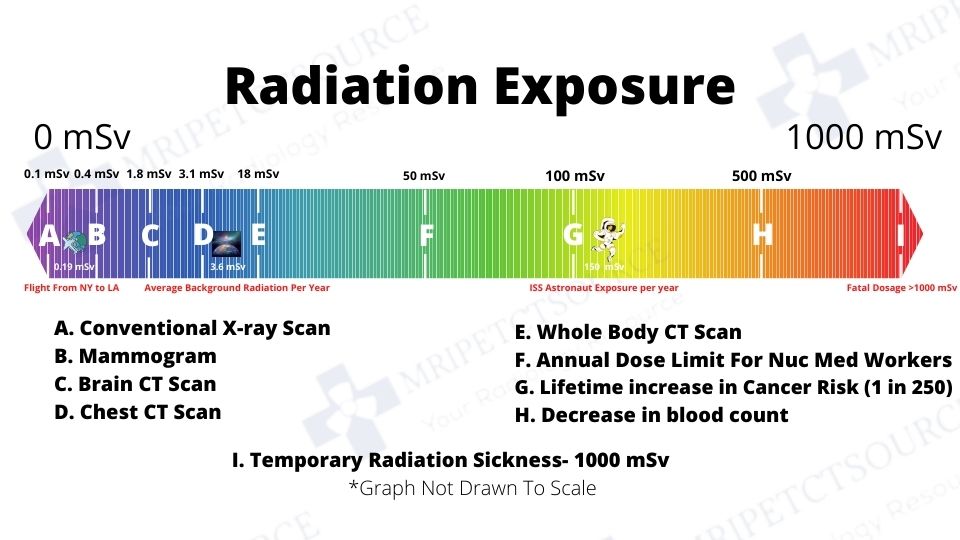
*Radiation dose may double if using contrast due to repeated scan after contrast injection.
- Chest X-ray approximate radiation dose of .1 mSv
- Mammography exam approximate radiation dose of .4 mSv
- Head CT approximate radiation dose of 1.8 mSv
- Chest CT sapproximate radiation dose of 3.1 mS
- Abdomen CT approximate radiation dose of 7.8 mSv
Click here to read more about CT scan risks and safety concerns.
Can A CT scan Detect Cancer?
CT scans actively identify and monitor cancer, tumors, and masses within the anatomy. Patients receive contrast agents to highlight the growth and metastasis throughout the body. Dedicated oncology imaging systems frequently pair a PET scanner with a CT system, facilitating precise tracking throughout the anatomy with both systems and minimizing radiation exposure. A radiologist overlays and interprets images from both systems for a comprehensive assessment.
Are CT Scans Dangerous?
No. A CT scan is considered safe as it represents a cutting-edge advancement in medical technology. Optimized scanning techniques not only reduce scan times but also significantly decrease radiation exposure compared to earlier methods. Find out more with our CT scan cancer risk calculator.
Conclusion
CT scans are safer than they have ever been before. Increased risk of cancer due to CT scans is minimal. During a Computed Tomography scan, patients are subjected to small amounts of radiation. The American College of Radiology (ACR) recommends patients only undergo exam when there is a clear medical benefit (cases such as trauma, oncology, monitoring disease, and aid in diagnosis).
A CT scan provides a quick, pain-free method of acquiring diagnostic images of bones and organs. They provide a safe solution for specialized imaging techniques when used sparingly. Learn more about computed tomography (CT) using the helpful links below.
Additional Resources
Join the Medical Imaging Source Community!
Subscribe To Our Newsletter To Stay Up To Date With The Latest News, Exclusive Offers, And Giveaways!
The information provided by MRIPETCTSOURCE (“we,” “us,” or “our”) on https://www.medicalimagingsource.com (the “Site”) is for general informational purposes only. All information on the Site is provided in good faith, however we make no representation or warranty of any kind, express or implied, regarding the accuracy, adequacy, validity, reliability, availability, or completeness of any information on the Site. UNDER NO CIRCUMSTANCE SHALL WE HAVE ANY LABILITY TO YOU FOR ANY LOSS OR DAMAGE OF ANY KIND INCURRED AS A RESULT OF THE USE OF THE SITE OR RELIANCE ON ANY INFORMATION PROVIDED ON THE SITE. YOUR USE OF THE SITE AND YOUR RELIANCE ON ANY INFORMATION ON THE SITE IS SOLELY AT YOUR OWN RISK.

